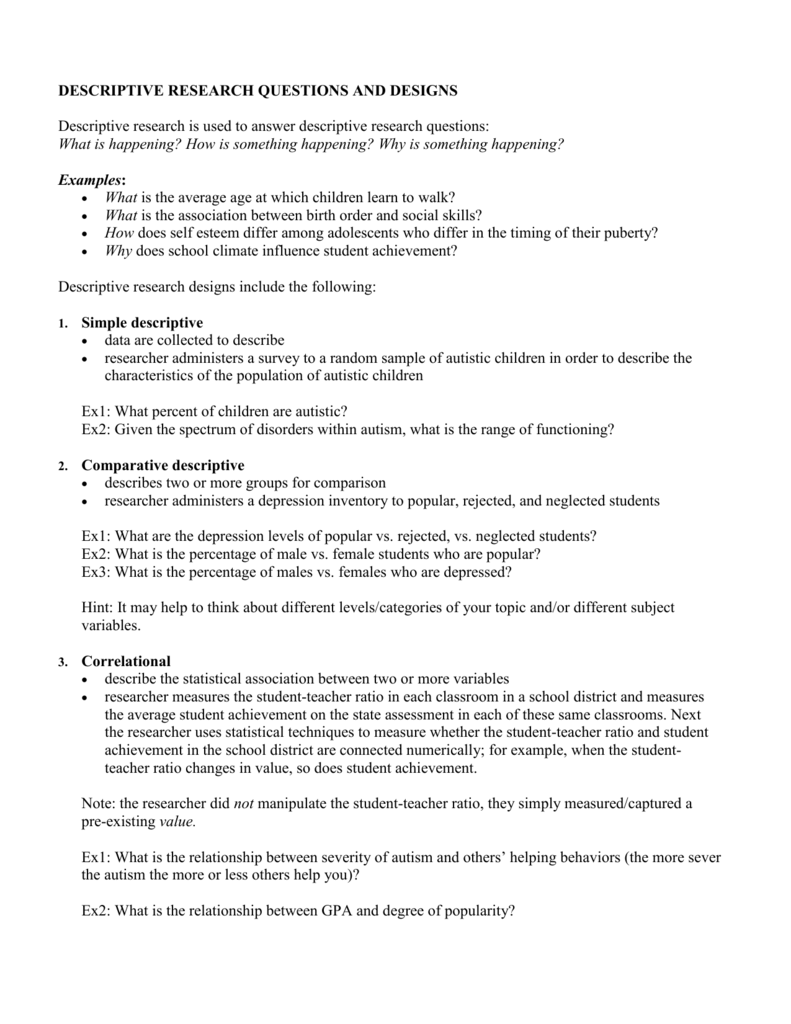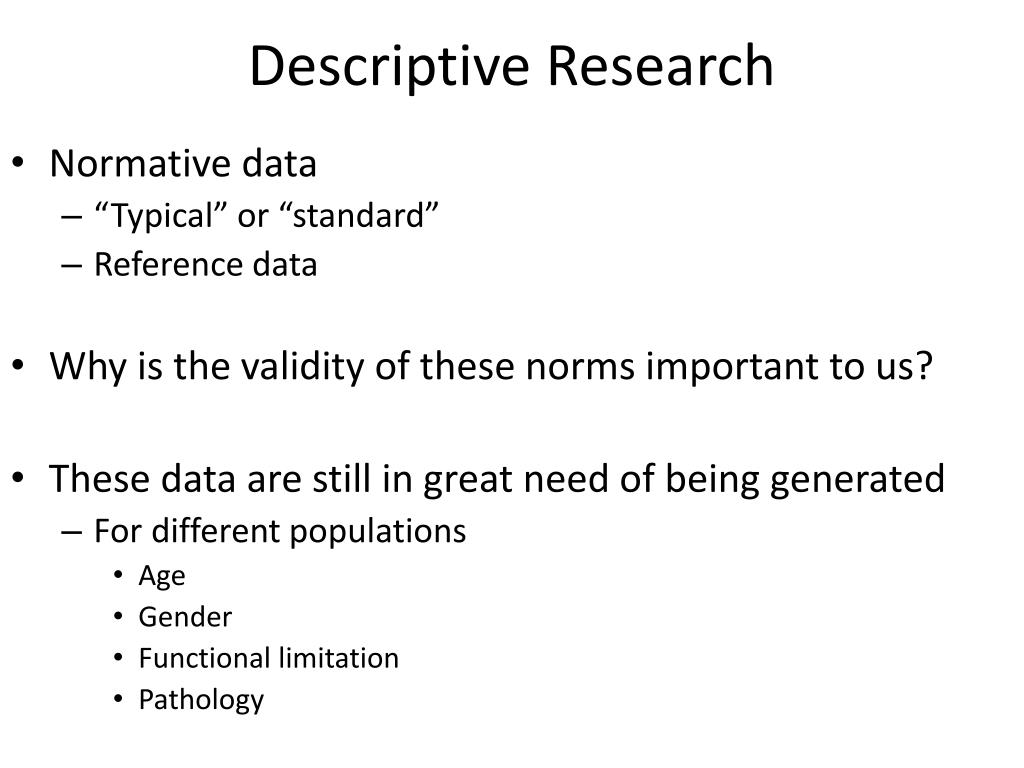Table Of Content

A key component of the descriptive research method is that it uses random variables that are not controlled by the researchers. This is because descriptive research aims to understand the natural behavior of the research subject. These studies are convenient to do since the data have often already been collected and are available from a reliable source.
Ensure adequate sample size

This involves examining the relationships between two or more variables to describe their patterns or associations. Correlational studies can be used to identify potential causal relationships or to explore the strength and direction of relationships between variables. An adequate sample size is important to ensure that the results of the study are statistically significant and can be generalized to the population being studied. Descriptive research often requires a large amount of data collection and analysis, which can be time-consuming and resource-intensive.
Questionnaire – Definition, Types, and Examples
Market researchers use descriptive research for a range of commercial purposes to guide key decisions. Descriptive research is easy to replicate, making it a reliable way to gather and compare information from multiple sources. Descriptive research is straightforward to replicate, making it a reliable way to gather and compare information from multiple sources. In the descriptive–normative survey, you compare the study’s results to the norm. You can generalize knowledge gained from studying a case study to benefit a broader audience. It involves using a subset of a larger group as a sample to characterize the features of that larger group.
Case Study – Methods, Examples and Guide
Longitudinal studies can be used to track changes in attitudes, behaviors, or outcomes over time, or to investigate the effects of interventions or treatments. Descriptive research design does not attempt to establish cause-and-effect relationships between variables or make predictions about future outcomes. Instead, it focuses on providing a detailed and accurate representation of the data collected, which can be useful for generating hypotheses, exploring trends, and identifying patterns in the data. This descriptive research method involves observing and gathering data on a population or phenomena without manipulating variables.

Descriptive research design is a type of research methodology that aims to describe or document the characteristics, behaviors, attitudes, opinions, or perceptions of a group or population being studied. The method primarily focuses on describing the nature of a demographic segment without focusing on “why” a particular phenomenon occurs. In other words, it “describes” the research subject without covering “why” it happens. It is distinctive because it can use quantitative and qualitative research approaches at the same time. Organizations use descriptive research designs to determine how various demographic groups react to a certain product or service.
Observations
Using descriptive research you can identify patterns in the characteristics of a group to essentially establish everything you need to understand apart from why something has happened. Descriptive research is a research method used to try and determine the characteristics of a population or particular phenomenon. A descriptive study is one that is designed to describe the distribution of one or more variables, without regard to any causal or other hypothesis. This involves observing and documenting the behavior or interactions of individuals or groups in a natural or controlled setting. Observational studies can be used to describe social, cultural, or environmental phenomena, or to investigate the effects of interventions or treatments. Descriptive research provides a surface-level understanding of a phenomenon, rather than a deep understanding.
In a nutshell, descriptive research is an exploratory research method that helps a researcher describe a population, circumstance, or phenomenon. In other words, it does not involve changing the study variables and does not seek to establish cause-and-effect relationships. Descriptive research is a methodological approach that seeks to depict the characteristics of a phenomenon or subject under investigation.
It is often used to gain a deep understanding of the beliefs, behaviors, and practices of a particular group. Descriptive research can be used to validate sampling methods and to help researchers determine the best approach for their study. Descriptive research can provide valuable information and insights into a particular topic, which can inform future research, policy decisions, and programs. Descriptive research design aims to systematically obtain information to describe a phenomenon, situation, or population.
Completeness and consistency of primary outcome reporting in COVID-19 publications in the early pandemic phase: a ... - BMC Medical Research Methodology
Completeness and consistency of primary outcome reporting in COVID-19 publications in the early pandemic phase: a ....
Posted: Sat, 29 Jul 2023 07:00:00 GMT [source]
It involves collecting detailed information on the subject through a variety of methods, including interviews, observations, and examination of documents. Descriptive research is non-experimental, meaning that the researcher does not manipulate variables or control conditions. The researcher simply observes and collects data on the population or phenomenon being studied.
Using valid and reliable data collection methods is important to ensure that the data collected is accurate and can be used to answer the research question. Researchers should choose methods that are appropriate for the study and that can be administered consistently and systematically. Surveys are a type of descriptive research that involves collecting data through self-administered or interviewer-administered questionnaires. Additionally, they can be administered in-person, by mail, or online, and can collect both qualitative and quantitative data.
This is because researchers aim to gather data in a natural setting to avoid swaying respondents. The authors did, subsequently in the paper, look at the relationship of myopia (an outcome) with children's age, gender, socioeconomic status, type of school, mother's education, etc. (each of which qualifies as an exposure). Those parts of the paper look at the relationship between different variables and thus qualify as having “analytical” cross-sectional design. Descriptive studies can be of several types, namely, case reports, case series, cross-sectional studies, and ecological studies. In the first three of these, data are collected on individuals, whereas the last one uses aggregated data for groups.

No comments:
Post a Comment